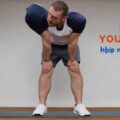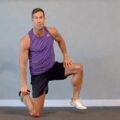As we journey through life, our bodies are constantly changing and adapting. One of the most precious gifts we can give ourselves is the ability to move freely and comfortably, no matter our age. Mobility isn’t just about being able to touch your toes or run a marathon – it’s about embracing life fully and nurturing our wellbeing in body, mind, and spirit. Let’s explore how cultivating mobility can be a compassionate path to longevity and vitality.
Understanding Mobility and Its Importance
Mobility is more than just flexibility or range of motion. It encompasses our ability to move through our environment with ease, to perform daily tasks without pain or limitation, and to engage joyfully in the activities we love. Good mobility allows us to:
- Maintain independence as we age
- Reduce the risk of injuries and falls
- Improve overall quality of life
- Stay connected to our communities and loved ones
- Continue pursuing our passions and hobbies
By nurturing our mobility, we’re investing in our future selves and creating a foundation for a life well-lived.
The Mind-Body Connection in Mobility
Mobility isn’t just a physical practice – it’s intimately connected to our mental and emotional wellbeing. When we move with ease and grace, we often feel more confident, less stressed, and more in tune with our bodies. This mind-body connection works both ways:
- Reducing physical tension can help ease mental stress
- Practicing mindfulness during movement can deepen our body awareness
- Feeling physically capable can boost our self-esteem and mood
- Moving joyfully can be a form of self-expression and creativity
By approaching mobility as a holistic practice, we nurture not just our bodies, but our whole selves.
Gentle Ways to Improve Mobility
Improving mobility doesn’t have to mean punishing workouts or painful stretches. There are many gentle, compassionate ways to enhance our movement capabilities:
- Yoga: With its focus on breath, mindfulness, and gentle stretching, yoga can be an excellent way to improve mobility at any age or fitness level.
- Tai Chi: This ancient Chinese practice combines slow, flowing movements with deep breathing and meditation, promoting balance, flexibility, and relaxation.
- Swimming: The buoyancy of water makes swimming a low-impact way to move your body through its full range of motion.
- Walking: Simple, accessible, and effective, regular walks can improve overall mobility and cardiovascular health.
- Gentle stretching: Taking a few minutes each day to gently stretch can make a big difference in how we feel and move.
Remember, the goal is not to push ourselves to extremes, but to move in ways that feel good and nourishing to our bodies.
Nutrition and Hydration for Mobility
What we put into our bodies plays a crucial role in our mobility and overall health. Proper nutrition and hydration can:
- Reduce inflammation that can limit mobility
- Provide the nutrients needed for joint and muscle health
- Support overall energy levels for movement
- Help maintain a healthy weight, which can ease stress on joints
Focus on eating a variety of colorful fruits and vegetables, lean proteins, healthy fats, and staying well-hydrated. Remember, nourishing our bodies is an act of self-care and compassion.
The Social Aspects of Mobility
Mobility isn’t just about individual health – it’s also about staying connected to our communities and loved ones. Good mobility allows us to:
- Participate in social activities and gatherings
- Travel and explore new places
- Engage in volunteer work or community service
- Play with grandchildren or pets
- Continue working or pursuing meaningful projects
By maintaining our mobility, we’re not just taking care of ourselves – we’re nurturing our relationships and our ability to contribute to the world around us.
FAQ: Mobility and Longevity
Q1: How often should I work on improving my mobility?
A1: Consistency is key when it comes to mobility. Aim to incorporate some form of mobility work into your daily routine, even if it’s just for 10-15 minutes. Listen to your body and do what feels good and sustainable for you.
Q2: I’m older and have never focused on mobility before. Is it too late to start?
A2: It’s never too late to start improving your mobility! In fact, mobility work can be especially beneficial as we age. Start slowly with gentle movements and gradually increase as you feel comfortable. Always consult with a healthcare provider before starting a new exercise routine.
Q3: Can improving mobility help with chronic pain?
A3: Yes, improved mobility can often help manage chronic pain. By increasing flexibility and strength, we can reduce strain on our joints and muscles. However, it’s important to work with a healthcare provider to develop a safe and effective plan for your specific needs.
Q4: How does stress affect mobility?
A4: Stress can have a significant impact on our mobility. It can cause muscle tension, affect our posture, and even change our breathing patterns. Incorporating stress-reduction techniques like meditation or deep breathing into your mobility practice can be very beneficial.
Q5: What’s the connection between sleep and mobility?
A5: Good sleep is crucial for mobility and overall health. During sleep, our bodies repair and regenerate tissues, including muscles and joints. Poor sleep can lead to increased inflammation and reduced mobility. Prioritizing good sleep hygiene can support your mobility efforts.
In conclusion, mobility is indeed a key to longevity, but it’s so much more than that. It’s a pathway to joyful, engaged living at any age. By approaching mobility with compassion and care, we’re not just adding years to our lives – we’re adding life to our years. Remember, every step, stretch, and movement is an opportunity to celebrate the amazing capabilities of our bodies and to nurture our overall wellbeing. Here’s to moving through life with grace, ease, and joy!









